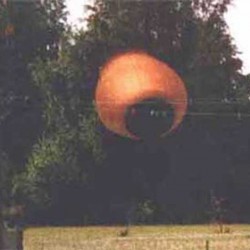Below is short list of some of the most endangered mammals on this planet. Some are so rare that they have already been classed as extinct!
It’s difficult to stop progress, especially in developing countries, but a much greater understanding of the environment and the wildlife that lives around us needs to happen NOW, before any more species disappear. Once they have gone, that is it, we will never see them again!
 1. Yangtze River dolphin
1. Yangtze River dolphin
The baiji is a graceful freshwater dolphin, characterised by a very long, slightly upturned beak and low triangular dorsal fin. In August 2007, it was officially announced extinct, but there have been a number f unconfirmed sighting since. As a result, it is believed that Baiji may still exists, although it is in very serious danger of disappearing for ever!
Population: Believed Extinct!
 2. Long-beaked echidna
2. Long-beaked echidna
Long-beaked echidna belong to the monotremes group that also includes the short-beaked echidna and duck-billed platypus. The species lays eggs like a reptile, and fossil evidence suggests they have changed very little during the last 100 million years, making them the most primitive mammals on the planet.
Population: Estimated 300,000 individuals.
 3. Riverine Rabbit
3. Riverine Rabbit
This ancient rabbit is one of South Africa‘s rarest and most endangered mammal species and lives in one of the few areas of the Karoo Desert that is suitable for conversion to agriculture. As a result it has lost most of it natural habitat to farming. It is believed that there are less than 250 Riverine Rabbits living in the wild.
Population: Fewer than 250.
 4. Cuban solenodon
4. Cuban solenodon
The species was almost wiped out by introduced predators such as dogs and cats following European colonisation of Cuba, and was believed extinct until a single individual was captured in 2003. Like its relative that Hispaniolan solenodon, it is thought to secrete a toxic saliva to subdue its prey.
Population: Unknown.
 5. Hispaniolan solenodon
5. Hispaniolan solenodon
Resembling a scruffy, overgrown shrew, the ancestors of this West Indian insectivore separated from all other living mammal groups around 76 million years ago. It is one of only a few species of mammal capable of producing toxic saliva, which it injects into its prey through special grooves in its incisors. Like Cuban solenodon it was almost wiped out following European colonisation of Haiti and the Dominican Republic.
Population: Unknown.
 6. Sumatran rhinoceros
6. Sumatran rhinoceros
This two-horned rhino is the smallest and most threatened of the five living rhinoceros species. The Sumatran Rhino is a mostly solitary animal except for courtship and child-rearing. Extensive deforestation and poaching for the horn have caused a dramatic decline in rhino numbers, and it is estimated that fewer than 275 individuals survive.
Population: Estimated 275.
 7. Black rhinoceros
7. Black rhinoceros
The Black Rhinoceros is a species of rhinoceros, native to the eastern and central areas of Africa and is one of the four subspecies, the West African Black Rhinoceros has been tentatively declared as extinct. The total population decreased by a massive 96% between 1970 and 1992, the largest decline of any of the rhino species.
Population: Estimated 2,300 in the 1990’s a massive drop from 65,000 in 1970.
 8. Bactrian camel
8. Bactrian camel
This camel is probably the ancestor of all domestic two-humped camels. It is superbly adapted to life in the harsh Gobi Desert, one of the most hostile and fragile regions on the planet. The Bactrian Camel has two humps on its back, in contrast to the single-humped Dromedary Camel.
Population: An estimated 950 remaining in the wild in north west China and Mongolia.
 9. Northern hairy-nosed wombat
9. Northern hairy-nosed wombat
The Northern Hairy-nosed Wombat, also known as the Yaminon, is one of three species of wombats. It was found across New South Wales, Victoria and Queensland as recently as 100 years ago, but is now restricted to a 3 km square range within the Epping Forest National Park in Queensland. Like many species on this list, it has suffered greatly since European settlement.
Population: estimated 115 individuals remaining in a single colony.
 10. Sumatran rabbit
10. Sumatran rabbit
Also known as the Sumatra Short-eared Rabbit or Sumatran Rabbit, it is found in the dense montane forests in western Sumatra, Indonesia. No living animals have been seen or studied by scientists since the 1930s, and it was presumed extinct until it was accidentally photographed in 1998. It was captured on camera again in 2007 but remains one of the rarest and most elusive mammals on the planet.
Population: Unknown.
Source: EDGE, Wikipedia and many other websites.
To find out more about endangered mammals and amphibians, visit EDGE of Existence.












